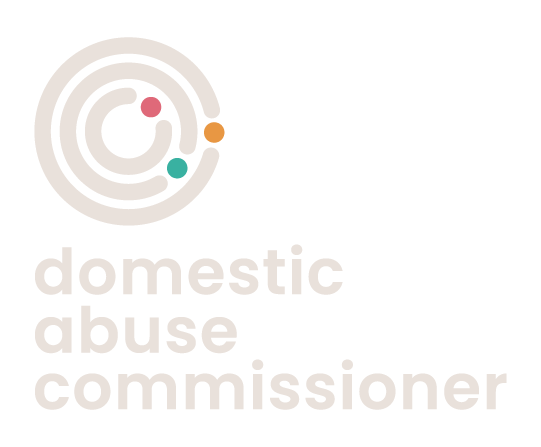By Natalie Page, founder of the global campaign for survivor family justice #thecourtsaid, and director of Survivor Family Network
In my role as Director of the Survivor Family Network, and founder of global campaign for survivor family justice #thecourtsaid, I work to support victims and survivors of domestic abuse who have been through or are going through the family courts.
Currently, the domestic abuse victims I work with who are entering the family court feel that they have no way of knowing if they will be safeguarded or put in further danger. Information that should be shared from other agencies about their abuse may or may not turn up. The victims I speak to feel they just can’t be sure if they will get a fair hearing. Without sufficient transparency, it is impossible to say precisely what is going on in our family courts. Victims are consequently left in the dark.
Leaving an abusive relationship can be as hazardous – or even more hazardous – as staying in an abusive relationship and may involve dealing with the justice system. It becomes more complicated when leaving abuse with children. Many victims are in the unenviable position of simultaneously navigating separate criminal, financial and divorce proceedings, potentially running alongside heavily contested child arrangements proceedings, which can last for years. Abused families are also likely to be navigating trauma, poverty, and post-separation abuse. The act of leaving is a monumental task and not to be underestimated.
Currently, there isn’t reliable information coming out of the family court about scenarios we hear are commonly experienced by abused families. It is unknown how often child contact is granted in an abuse case. It is unknown what types of abuse are reported, and if it impacts the contact ordered. It’s uncertain whether evidence from other agencies is being reliably disclosed, whether relevant case law such as the historic re H-N is being effectively applied and whether instruments like PD12J are appropriately utilised. These instruments provide judges with rules that should be applied in cases citing abuse, yet we don’t know the rate they are used. Anecdotally we hear from survivors that they aren’t used routinely enough.
The long-awaited recommendation for a Monitoring and Reporting Mechanism was welcomed by all calling for clarity on the family court’s operations, particularly those who have experienced abuse. The harm report, published in 2020, outlined a dangerous culture for abuse survivors and recommended a raft of reforms.
A barrier to implementing the proposed reforms is the current lack of data from the family court. What cannot be quantified is unlikely to be fixed; systemic transformational change won’t be achieved until the current issues are sufficiently understood.
In October 2021, The Transparency Review, led by the President of the Family Division, Sir Andrew McFarlane, took a massive step forward, reigniting hopes of open justice. The President proposed that journalists should be able to report publicly on “what they see and hear” in family court. Nicole Jacobs, the Domestic Abuse Commissioner, was also given her statutory powers in October. Individually these are historic changes. Together, they represent crucial breakthroughs towards accountability.
Abuse is so prevalent in our society there is an inherent duty to provide people with the tools to understand the systems that deal with it. The Domestic Abuse Commissioner’s long-awaited Monitoring and Reporting Mechanism will be a tremendous resource for everyone involved in the family justice system. Campaigns like #thecourtsaid have long been calling for an improved response to domestic abuse in family court, acknowledging that public scrutiny is the first significant milestone on a much longer journey of change.
The Victims Commissioner for London, Claire Waxman, also welcomed this step, saying: “To tackle the issues in the Family Courts and instigate much-needed reforms, we first need a clearer picture of what is taking place in courtrooms. The new role played by the Domestic Abuse Commissioner in collecting Family Court data will be a crucial first step towards greater transparency and accountability.”
Without knowing precisely what is going on in our family courts, victims and survivors are faced with a dark unknown. The family court can make grave decisions behind closed doors, such as removing a child. The Channel 4 Dispatches film Torn Apart: Family Courts Uncovered revealed that no one knows how often the family court orders the enforced removal of a child whilst giving a never-before-seen public view of what it looks like. It shocked the nation.
The foundation of good governance is reliable data. Each potential future statistic holds thousands of complicated stories relating to possibly the worst time in a family’s life within it. What is reliably quantified must also be correctly understood. The family court must move on from mishandling parents and children’s concerns about domestic abuse and start delivering urgent reforms; the Monitoring and Reporting Mechanism will provide a crucially independent picture of the family court as the system tentatively prepares to open its doors. In the not-so-distant future, we will have a publicly accessible view of the court’s inner workings.
About the author: Natalie Page founded the global campaign for survivor family justice #thecourtsaid, and is director of Survivor Family Network. Natalie focuses her award-winning work on the often-overlooked rights and needs of abused mothers and children in family court.
You can read the proposals for an oversight mechanism here

